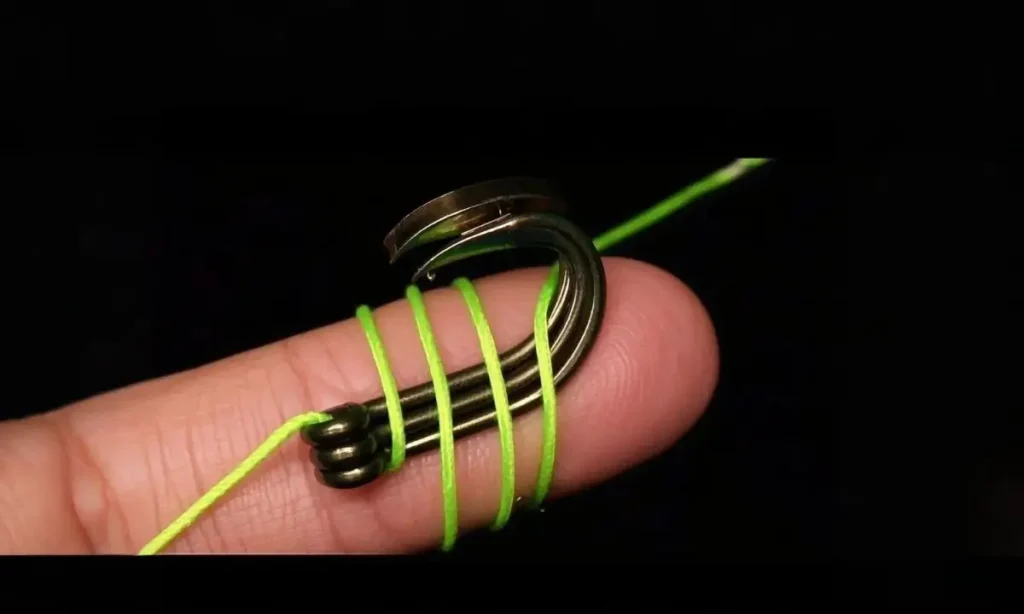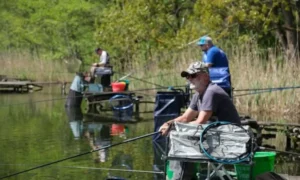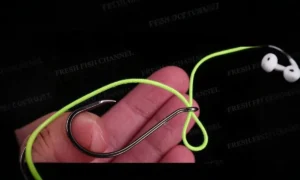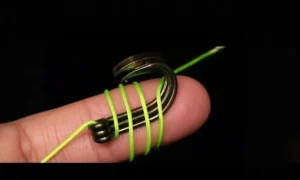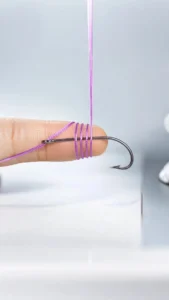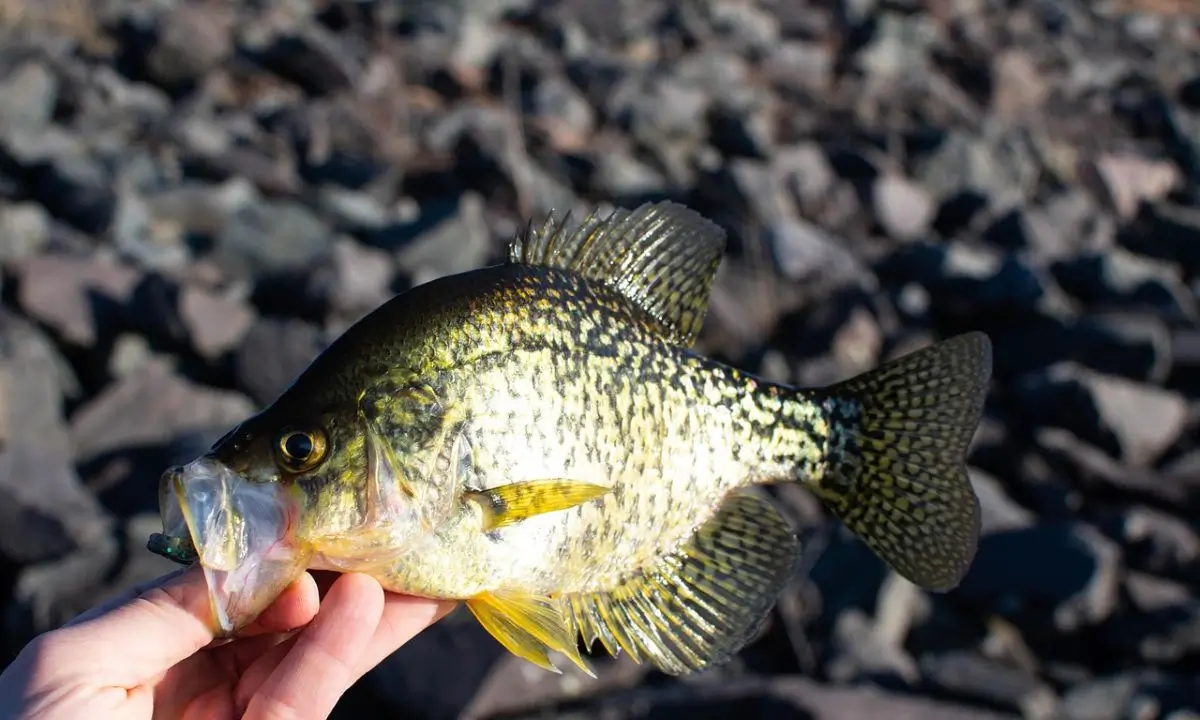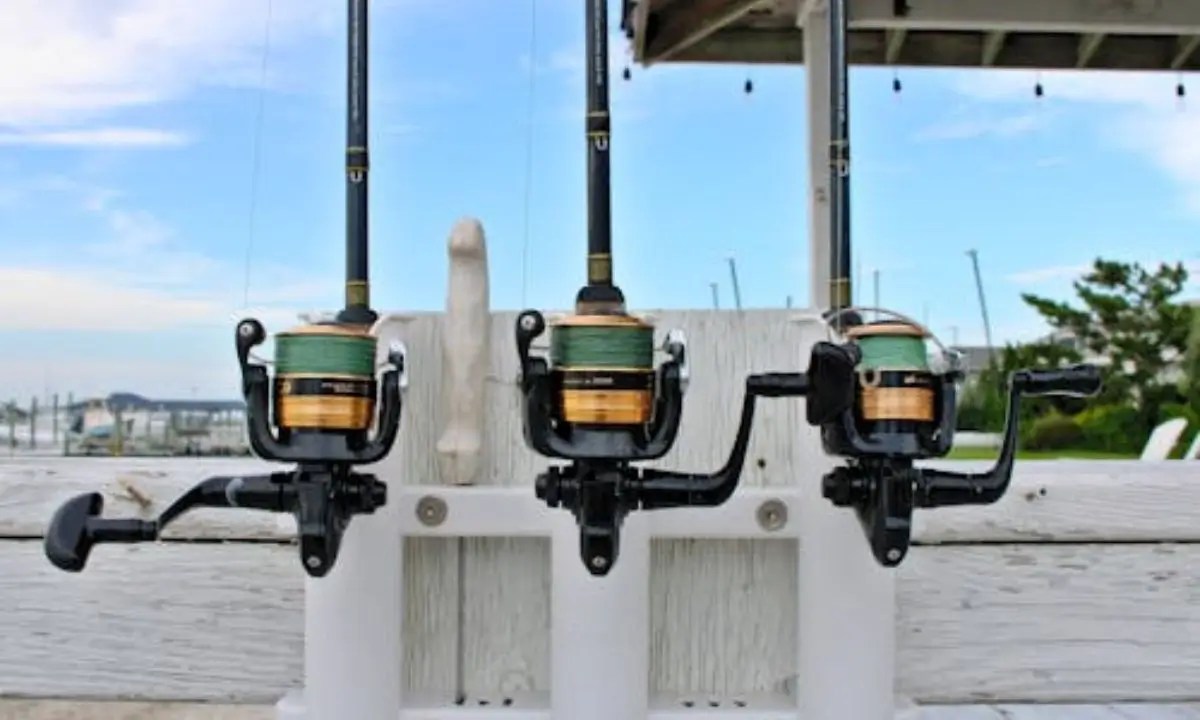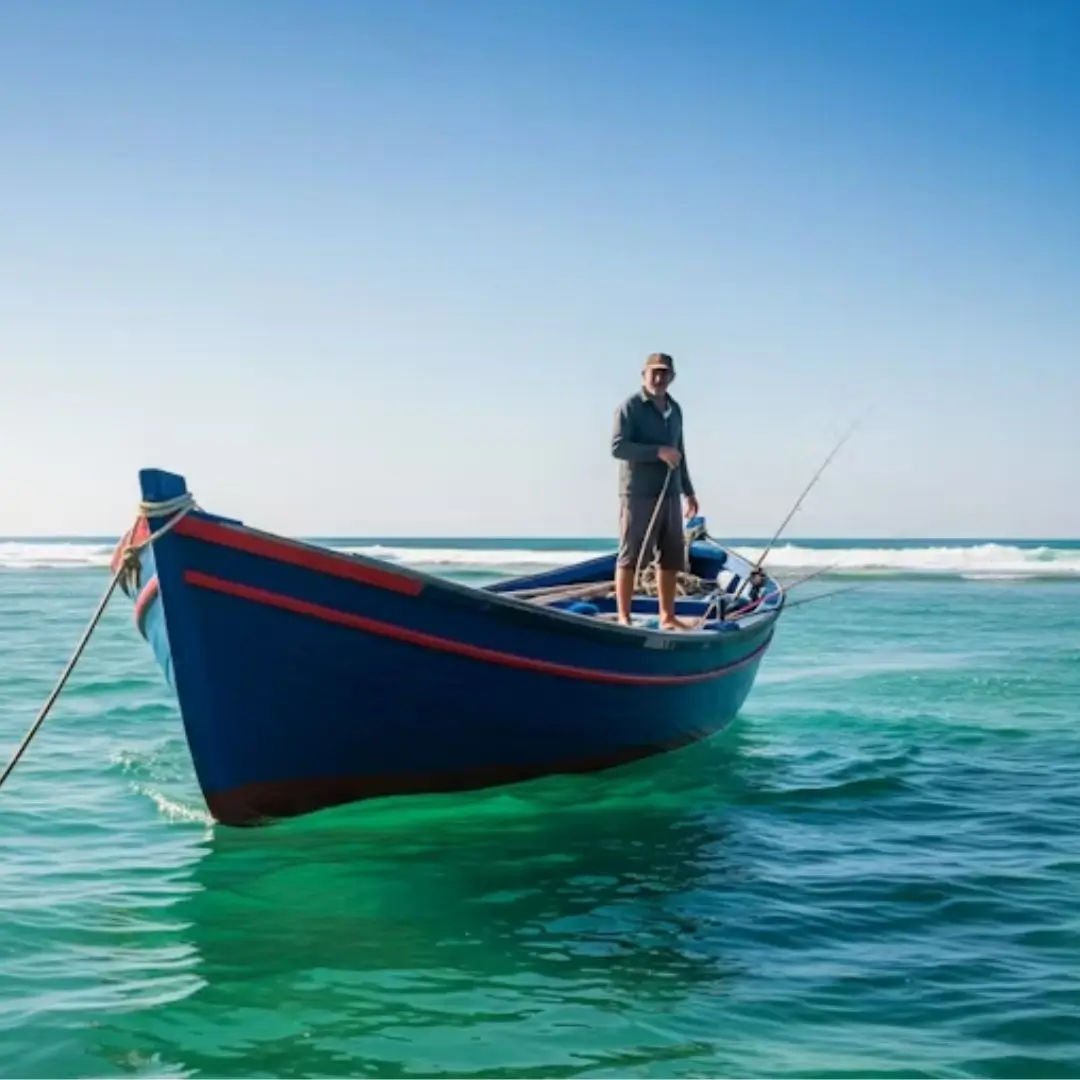How to make a fishing gaff
To make a fishing gaff at home, use a strong handle like bamboo or an old rod, attach a bent metal hook securely with rope and epoxy, and reinforce it for strength and comfort before fishing.
Introduction
Learning how to make a fishing gaff at home can save your fishing trip when your gear breaks or you don’t have a spare hook. A fishing gaff is a simple but powerful tool used to lift large fish safely from the water. Making one yourself doesn’t need expensive equipment or professional kits — just basic tools and a bit of creativity.
I still remember one fishing trip when my gaff snapped right in the middle of catching a big red snapper. Instead of giving up, I built a new one on the spot using a nail, bamboo stick, and tape. That quick DIY solution saved my day and inspired this guide.
In this step-by-step 2025 guide, you’ll learn how to make a DIY fishing gaff hook without a kit — using easy-to-find materials, safe methods, and real-life fishing experience. Whether you fish in saltwater or freshwater, this tutorial will help you build a durable, budget-friendly gaff at home.
🔹 Why Make a DIY Fishing Gaff Hook
Many anglers don’t realize how useful it can be to make a fishing gaff at home. Store-bought gaffs can be expensive, limited in size, or may break during a fishing trip. A DIY gaff hook not only saves money but also gives you full control over its size, strength, and handle design.
When you build your own gaff, you can customize it for the type of fish you usually catch. For example, a long bamboo handle works better for boat fishing, while a shorter stick is perfect for pier or shore fishing. You can choose strong, rust-resistant materials like metal nails or coat hangers for the hook, and wrap the handle with rope or tape for a comfortable grip.
Another major benefit is emergency preparedness. Imagine being deep in a fishing trip, and your gaff hook snaps. With the knowledge of how to make a DIY fishing gaff hook, you can quickly build a replacement using items on your boat. This skill ensures you never lose a fishing opportunity and boosts your confidence as a resourceful fisherman.
Building your own gaff also teaches patience, problem-solving, and hands-on skills that are valuable for any fishing adventure. In short, a DIY gaff hook is cost-effective, practical, and tailored to your personal fishing needs.
🔹 Tools & Materials You’ll Need
Before you start building your own gaff, it’s important to gather the right tools and materials. Knowing how to make a fishing gaff effectively begins with preparation. You don’t need a professional kit — simple, easy-to-find items are enough to create a strong and reliable DIY gaff hook.
Handle Options:
- Old fishing rod: Perfect for a sturdy and lightweight handle.
- Bamboo stick: Strong and flexible, ideal for larger fish.
- Wooden or plastic mop handle: Budget-friendly and easy to grip.
Hook Options:
- Large nail bent into a hook: Affordable and strong.
- Rust-proof metal coat hanger: Easily shaped into a durable hook.
- Broken or spare fishing hook: Works well if you already have extras like Mustad gaff hooks.
Connection & Grip Materials:
- Strong rope or paracord: Wrap around the handle for secure grip.
- Duct tape or electrical tape: Reinforces and waterproofs the connection.
- Epoxy, super glue, or waterproof adhesive: Ensures the hook stays firmly in place.
Essential Tools:
- Knife, pliers, or hammer: For shaping and attaching the hook securely.
Having these materials ready allows you to build a gaff quickly and safely. With just a few items, you can make a DIY fishing gaff that works efficiently for freshwater or saltwater fishing. Preparing properly also ensures your gaff is strong, reliable, and comfortable to use.
🔹 Main Benefits of Making Your Own Fishing Gaff Hook
Knowing how to make a fishing gaff at home comes with several real advantages for every angler. Whether you are a beginner or an experienced fisherman, creating your own DIY gaff hook gives you flexibility, safety, and confidence while fishing.
- Quick Adaptation During Emergencies:
Fishing trips don’t always go as planned. Gear can break or get lost. By making your own gaff hook, you can adapt instantly without waiting for a store-bought replacement. This ensures you never miss a big catch. - Cost-Effective Solution:
Store-bought gaffs can cost $30–$150. Building a DIY gaff from simple items like old rods, bamboo sticks, or nails saves money and still gives a durable, reliable tool. - Customization:
With a homemade gaff, you can adjust the handle length, hook size, and grip style. This customization allows you to create a gaff suited perfectly to your fishing style — whether you fish in freshwater, saltwater, from a pier, or a boat. - Skill Development and Self-Reliance:
Making your own gaff improves problem-solving skills, creativity, and practical knowledge. You’ll gain confidence in handling emergencies and build hands-on skills that make you a more capable and independent fisherman. - Satisfaction and Achievement:
There’s nothing more satisfying than catching a fish with a tool you made yourself. A DIY gaff hook not only works efficiently but also gives a sense of pride and accomplishment.
🔹 Step-by-Step: How to Make a Fishing Gaff Hook Without a Kit
Building your own gaff is easier than it seems. If you know how to make a fishing gaff, you can turn simple materials into a reliable tool for freshwater or saltwater fishing. Follow these step-by-step instructions for a strong DIY gaff hook.
Step 1: Choose Your Handle
Pick a sturdy handle that matches your fishing style. Bamboo sticks, old fishing rods, or wooden mop handles work well. Handles should ideally be 3–6 feet long: longer for boat fishing, shorter for shore or pier fishing. A strong handle ensures stability and control while lifting fish.
Step 2: Make the Hook
If you don’t have a spare gaff hook, you can bend a large nail, metal rod, or a rust-proof coat hanger into a curved hook. Sharpen the tip carefully with a file or stone. Make sure the hook is strong enough to lift the size of fish you target. Avoid thin wires that can bend or break easily.
Step 3: Attach the Hook to the Handle
Drill a small hole in your handle and insert the base of the hook. Use rope, epoxy, and tape to hold it firmly. Wrap the connection multiple times for added strength. Test it by pulling the hook to ensure it won’t wobble or come loose.
Step 4: Reinforce and Wrap the Handle
Wrap the grip area with rope or paracord for comfort and control. Add duct tape or waterproof tape to protect against water damage. A well-wrapped handle prevents slipping and gives a solid grip during fishing.
Following these steps ensures your DIY fishing gaff hook is strong, safe, and effective. By learning how to make a fishing gaff, you can handle emergencies, save money, and enjoy a more confident fishing experience. details Do Fish Hooks Dissolve
🔹 Real Examples & Comparisons
Knowing how to make a fishing gaff is great, but seeing real-life examples makes it even more useful. From my own fishing experience, DIY gaff hooks have saved me countless times.
My Real Experience:
Last monsoon season, I was catching catfish when my store-bought gaff broke mid-trip. I had no backup, so I quickly made a gaff using a mop handle and a bent nail. I wrapped it with shoelaces and tape from my tackle box. Surprisingly, it held strong for the rest of the trip and helped me land three big catches. This experience proved that a DIY fishing gaff hook can be just as effective as a store-bought one when made correctly.
DIY vs. Store-Bought Gaffs:
| Feature | DIY Gaff Hook | Store-Bought Gaff |
| Cost | Free or very cheap | $30 – $150 |
| Custom Size | Yes | Limited |
| Material Choice | You choose | Fixed |
| Strength | Medium to strong | Strong |
| Emergency Use | Perfect | Not useful if broken |
DIY gaffs offer customization, affordability, and emergency readiness that store-bought gaffs often lack. They are ideal for anglers who want to stay prepared for unexpected situations while fishing.
By learning how to make a fishing gaff, you gain flexibility, confidence, and independence on the water. Whether you are fishing in freshwater or saltwater, a well-made DIY gaff can handle small to medium fish effectively and safely.
DIY vs. Store-Bought Gaffs:
Feature DIY Gaff Hook Store-Bought Gaff
Cost Free or very cheap $30 – $150
Custom Size Yes Limited
Material Choice You choose Fixed
Strength Medium to Strong (DIY) Strong
Emergency Use Perfect Not useful if damaged
Safety Tips While Building & Using It
Always wear gloves when bending or sharpening metal.
Make sure the hook is tight and not wobbly.
Keep kids away during build.
Test the hook on a soft object before using it on fish.
Don’t overuse a weak DIY gaff for very large fish.
🔹 Safety Tips While Building & Using Your DIY Gaff
Learning how to make a fishing gaff is exciting, but safety should always come first. A DIY gaff hook can be very strong, but improper handling may cause injuries. Here are key safety tips to follow:
- Wear Gloves: Always wear protective gloves when bending metal, sharpening hooks, or wrapping the handle. This prevents cuts and blisters.
- Check the Hook Stability: Before using your DIY gaff on fish, test the hook and handle connection. Make sure it is tight and not wobbly. Loose hooks can be dangerous.
- Keep Kids and Pets Away: While building or using your DIY gaff, keep children and pets at a safe distance. Sharp metal and tools can cause accidents.
- Sharpen Carefully: Use files or grinding tools with caution. Avoid rushing the process to prevent injuries. Always wear eye protection when working with metal.
- Test Before Use: Try lifting a soft object first to ensure your gaff can hold weight safely. This prevents failures during actual fishing trips.
- Know Your Limits: Avoid using a DIY gaff for very large fish if the handle or hook is not strong enough.
Following these tips keeps your fishing experience safe and enjoyable. A well-made and properly tested DIY gaff is effective, reliable, and safe to use in both freshwater and saltwater environments. details What Size Hooks Trout Fishing
Want Expert Help or Gear Suggestions?
If you want my feedback on your homemade gaff, or suggestions on what tools to keep in your tackle box for emergencies, feel free to contact me.
I often give free audits to beginner fishermen or budget anglers. Just DM me your setup, and I’ll guide you!
If you want a more detailed tutorial, check out my guide on how to make a gaff for fishing — perfect for quick DIY fixes. Need different build options? Don’t miss my step-by-step tips on how to make a gaff for fishing hook using both basic and advanced methods.
Final Thoughts
Building your own fishing gaff hook without a kit is not only possible but also highly rewarding. By learning how to make a fishing gaff, you gain the ability to adapt quickly during emergencies and continue your fishing trip without interruptions. A DIY gaff hook allows you to customize handle length, hook size, and materials to suit your style, making your fishing experience safer and more enjoyable.
Remember, using simple materials like bamboo sticks, old rods, or metal nails can save time and money while giving you a sense of achievement. Always test your homemade gaff before use, wrap the handle securely, and follow safety tips to ensure it performs well.
If this guide helped you:
✅ Share it with your fishing friends to spread these DIY tips.
✅ Subscribe to stay updated with more real-life fishing hacks.
✅ Contact me for personalized advice or emergency fishing solutions.
Tight lines! 🌊🐟 Keep exploring, experimenting, and enjoying the thrill of fishing with your own creative tools.
Have you ever tried making your own fishing gaff? Share your DIY tips or experiences in the comments below!
✍️ Written by Jihad – Professional Fisherman
Website: profishingbyjihad.com
Can I use an old fishing rod to make a gaff?
Yes! Old or broken fishing rods work perfectly. Ensure it is strong and stable enough to lift your targeted fish safely for both freshwater and saltwater fishing trips.
How strong is a DIY gaff hook?
A homemade gaff hook can lift small to medium fish effectively. Use thick metal, strong adhesive, and secure wrapping to ensure strength during fishing emergencies.
What materials are best for a homemade gaff?
Use sturdy handles like bamboo, old rods, or mop handles. Hooks can be made from nails, coat hangers, or spare gaff hooks. Secure connections with rope, tape, or epoxy.
How do I test my DIY gaff before fishing?
Test the gaff on a soft object or weight to ensure the hook is firm and the handle is stable. This prevents failures during real fishing trips.
Can a homemade gaff be used for saltwater fish?
Yes, for small to medium saltwater fish. Make sure to use rust-resistant metal and waterproof adhesive for durability in harsh environments.
How do I attach the hook securely to the handle?
Drill a hole in the handle, insert the hook base, and fix it with epoxy or strong rope. Wrap additional cord for extra grip and stability.
Is it legal to sell homemade gaff hooks?
Check local regulations before selling. Homemade gaffs may not meet legal safety standards in some areas, especially for saltwater or commercial fishing.


